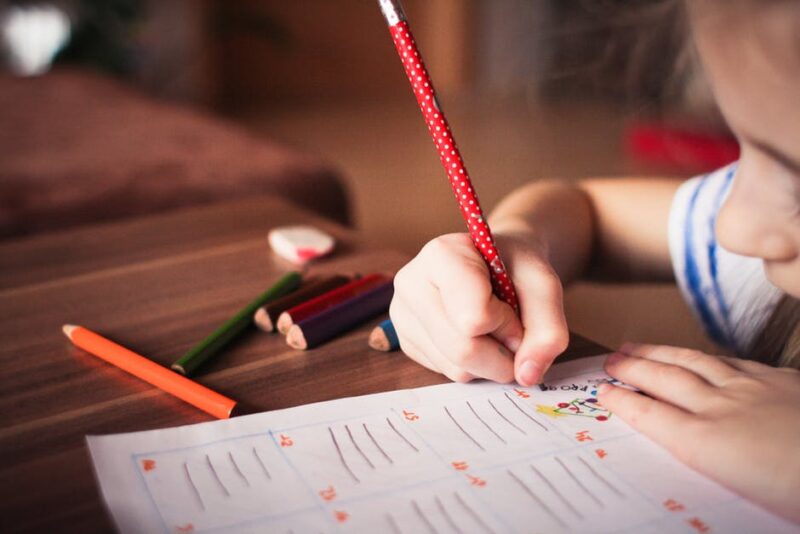Disclosure: This post may contain affiliate links, meaning we get a commission if you decide to make a purchase through our links, at no cost to you. Please read our disclosure for more info.
Did you know that a supportive network of relationships can help students feel happy? If you want to learn how to improve the academic success of your students, we can help.
In this guide, we’ll go over how to create an effective learning environment. Students will feel happy and supported.
Want to learn more? Keep reading.
In This Post:
- 1. Spend More Time Outside
- 2. Organize Your Classroom
- 3. Prioritize Safety and Comfort
- 4. Build Relationships With Parents and Students
- 5. Don’t Forget About Libraries
- 6. Use a Variety of Learning Models
- 7. Encourage Questions
- 8. Model Learning Habits
- 9. Build Trust
- Now You Have Tips on Creating an Effective Learning Environment
1. Spend More Time Outside
Students who go on an outdoor learning activity will be more attentive. Often, students remember the information taught during an outdoor activity.
Consistent exposure to nature will elevate students’ moods and decrease anxiety and stress.
Children have too much screen time. Outdoor learning helps students get active and focus on nature. Learn more about the benefits of physical education.
In outdoor settings, children tend to be more motivated to work in groups. In a group, kids will improve their social skills. Children learn how to communicate, manage conflicts, and cooperate.
Outdoor learning also gives children hands-on experiences in nature.
2. Organize Your Classroom
Organizing your classroom is another essential aspect of creating an effective learning environment.
Students and teachers should be able to access the materials they need for the lessons.
Think about what materials you use often and what’s only used occasionally. Make sure everything has a storage space. This way, the classroom will remain tidy and neat.
3. Prioritize Safety and Comfort
You’ll want to make sure safety is the primary concern when planning a room. Think about potential trip hazards. How will you store items safely, so they don’t harm the kids?
Look at the classroom from a kid’s perspective. Get down to their height. Where you place furniture might look good, but you want to make sure they are safe for children.
Consider the comfort of students. If kids aren’t comfortable in the classroom, they’ll get distracted and have a hard time focusing.
You’ll also want to think about traffic flow. Students should be able to move around easily and access different areas.
Focus on creating a good atmosphere. Make the classroom feel like a welcoming space for the kids. When you create a positive environment, the student will enjoy learning and feel safe.
4. Build Relationships With Parents and Students
Parents won’t be in the classroom except during parent teaching meetings. Yet, parents play a crucial role in educating their kids. Build a relationship with students and parents.
Have a system for homework. Keep parents informed about assignments the children have. Tell them when the homework gets sent home, when it needs to get returned, and the expectations.
You’ll also want to consider a communication method. You might need to talk about special events or remind students about something. Sometimes, you’ll need to discuss school trips and special projects.
When parents know about what’s going on with school life, they can support their child’s education.
Aim to build positive relationships with students from the first day. You can help students get to know you by exchanging letters or preparing icebreakers.
Encourage the students to begin to get to know one another too. Take time to build relationships. The time you take at the beginning will pay off later. You’ll help foster individual relationships that will last.
You can also reach out for help. Ask your fellow staff and faculty for advice. Reach out to teachers in your local community. Someone will be able to provide insight.
5. Don’t Forget About Libraries
Libraries are a top resource that can help support learning. The library is where kids can develop a passion for reading and enjoy quiet time from the classroom.
If your school has a separate library, give students the chance to access the library during the day.
Add extra resources that students will find challenging. This way, they can develop their literacy skills.
If there isn’t a separate library, create a corner or library area in your classroom. Give students a range of non-fiction and fiction reading material.
Think about the space available and your budget. You don’t only need books; you’ll also need storage and furniture.
Bookcases are great if you have wall space. Rotating book stands are helpful for small corners with limited space.
6. Use a Variety of Learning Models
Project-based learning, peer-to-peer learning, and direct instruction are some forms of learning models you can use. You can also try inquiry-based learning, eLearning, or mobile learning.
These models won’t suit the curriculum or needs of every learner in your classroom. Aim for a diverse learning approach. Try to see what learning model works best for your students.
7. Encourage Questions
Questions tend to be more important than answers. Good questions will lead to learning. Place value on those kinds of questions.
Give students points when they ask decent questions. Ask questions as a form of written assessment.
8. Model Learning Habits
You’ll want to model behaviors like creativity, curiosity, and persistence. Students will learn from those around them and tend to observe their teachers.
9. Build Trust
Make sure you give students the freedom to make their own choices. Let them decide topics for projects. Ask them to provide input on the classroom layout.
Students will feel like their voice matters. Ask the students to provide suggestions for new activities.
Now You Have Tips on Creating an Effective Learning Environment
We hope this guide on the learning environment was insightful. Use these tips to build an effective learning environment.
Browse our other helpful resources on health, fitness, and more.





